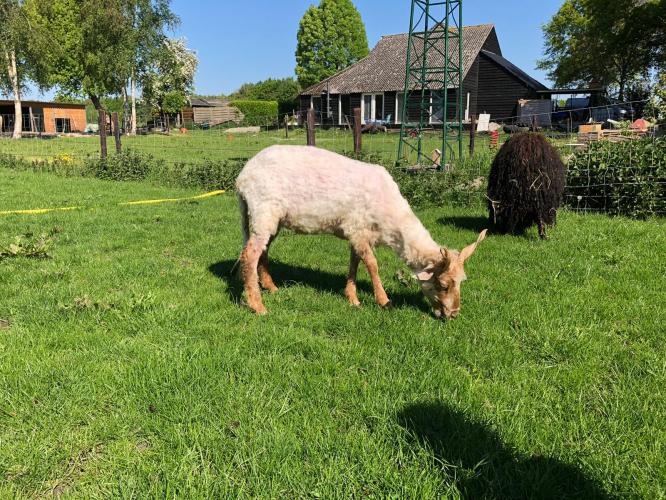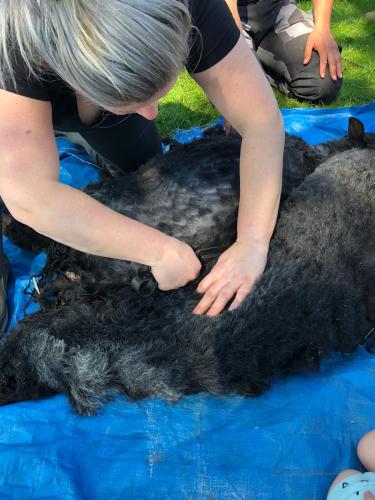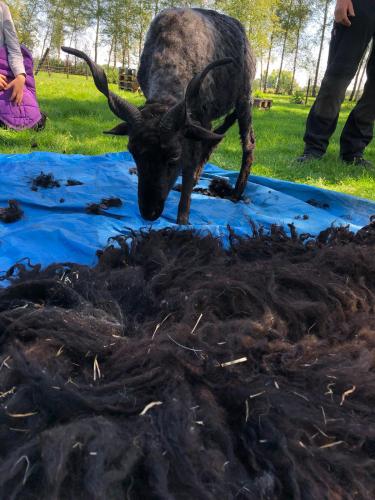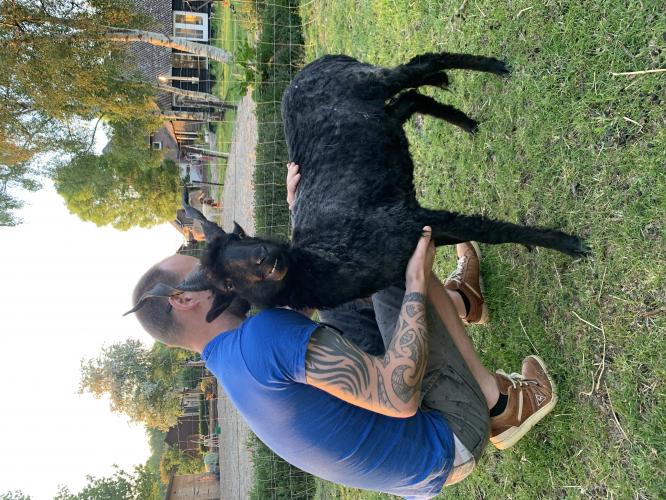
Sheep cutting.
Today I led a professional #schapenscheerder our Hungarian #Racka #schaapjes #geschoren /clipped.
I bought a special sheep shear scissors and was allowed to learn the craft.
I can tell that I thought it was a fantastic experience, and I will do this to do it more often.
Now I must say that we also have the most sweet, quiet sheep.
That we had the sheep on their buttocks, which they didn't like, we could reassure her and let her do anything. In fact, licorice was so calm that she did not need to be held, only support and talk to it gently.
I hear the animal activists already talking negatively about the #schapen shave action. And don't dare be proud that today we have removed the coat from our suus and licorice in an animal friendly way with scissors (no clippers). There's no sigh of violence involved. There are no wounds. And the animals don't have to cause them to lose their heat fast enough.
Shearing sheep has several reasons. First of all, the sheep (after getting information on the Internet and stories of people who know it) are too far-bred that they can no longer moult their fur by nature, just like horses, dogs, cats, cows, donkeys and so on. The sheep closest to nature could still do that, but you shouldn't want to. You also help a horse remove their hair if necessary. Also, a horse is shaved if they cannot lose their fur. Oh and dogs, some cats breeds, so why not a sheep?
Besides, I don't have my sheep for their wool, but because I love them and they can eat good grass and enrich our family.
But it is also better to shave the coat because flies can start laying their eggs on the tail and butt pieces where lumps of stool and urine stick to. There's nothing you can do about that.
Certainly our rackas it is good that the picks are removed, because of the length of their tail there is a lot of dirt that can not be maintained with soap and water, and which you do not want to burden your sheep with, but also is simply not healthy because you remove the wool fat. Wool grease is the tangible fat layer that protects the skin and wool from all weather conditions. And we can also see that the sheep are not too thick or too thin. Although this is checked regularly (4 times a year) by the veterinarian.
But how do you know when to shave? It is called so beautiful that you have to start shaving in the spring. But you have to look at your sheep, at their fur.
You can see it (with our rackas and at least). The wool is attached to the skin, (duh that makes sense) but from there you can see if it's time to cut. I find it hard to explain how you can see it, so I hope you understand.
You have the skin, then fine new wool, then some stiffer wool with a lot of wool fat in it. Once you see the new wool, it's time to cut. Not before, then the sheep won't be ready.
But, of course, you need to take into account more that it can be cold at night. And you got a warm place for them. And we have!
Now we have two beautiful woolen blankets from our own licorice and suus.
I hope to be able to felted the fur next year, or when it allows itself. Then I will forever have a wonderful keepsake of our dear, loyal sheep.
- Comments (0)
- Recommended
- Milestones


Here are your recommended items...
Here are your milestones...









